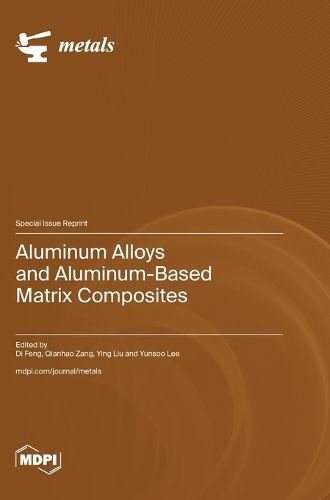Readings Newsletter
Become a Readings Member to make your shopping experience even easier.
Sign in or sign up for free!
You’re not far away from qualifying for FREE standard shipping within Australia
You’ve qualified for FREE standard shipping within Australia
The cart is loading…






This title is printed to order. This book may have been self-published. If so, we cannot guarantee the quality of the content. In the main most books will have gone through the editing process however some may not. We therefore suggest that you be aware of this before ordering this book. If in doubt check either the author or publisher’s details as we are unable to accept any returns unless they are faulty. Please contact us if you have any questions.
Aluminum alloys and aluminum matrix composite materials have become the first choice to replace steel materials due to their high specific strength. The penetration rate of light alloys in new energy vehicles, the aerospace industry, and the rapid rail transit industry is increasing quickly. The reduction in energy consumption resulting from structural weight reduction is the key element for sustainable development. For example, every 100 kg reduction in car mass can save 0.6 L of fuel per 100 kilometers and reduce the emission of 800-900 g of carbon dioxide. For every 10% reduction in the weight of new energy vehicles, their range can be increased by 5.5% (for every 10 kg reduction in the weight of pure electric vehicles, their range can be increased by 2.5 km). The comprehensive proportion of aluminum alloys in automobiles will reach about 26% by 2040. The vigorous development of the automotive manufacturing industry has provided a huge application scenario for aluminum alloy profiles, aluminum alloy castings, and forgings. In addition, the use of aluminum in aerospace and high-speed rail is even more widely recognized. This Special Issue summarizes research on and the application of aluminum alloys of typical composition, including AlZnMgCu, AlCu, AlMn, and even Ti-aluminum alloys.
$9.00 standard shipping within Australia
FREE standard shipping within Australia for orders over $100.00
Express & International shipping calculated at checkout
This title is printed to order. This book may have been self-published. If so, we cannot guarantee the quality of the content. In the main most books will have gone through the editing process however some may not. We therefore suggest that you be aware of this before ordering this book. If in doubt check either the author or publisher’s details as we are unable to accept any returns unless they are faulty. Please contact us if you have any questions.
Aluminum alloys and aluminum matrix composite materials have become the first choice to replace steel materials due to their high specific strength. The penetration rate of light alloys in new energy vehicles, the aerospace industry, and the rapid rail transit industry is increasing quickly. The reduction in energy consumption resulting from structural weight reduction is the key element for sustainable development. For example, every 100 kg reduction in car mass can save 0.6 L of fuel per 100 kilometers and reduce the emission of 800-900 g of carbon dioxide. For every 10% reduction in the weight of new energy vehicles, their range can be increased by 5.5% (for every 10 kg reduction in the weight of pure electric vehicles, their range can be increased by 2.5 km). The comprehensive proportion of aluminum alloys in automobiles will reach about 26% by 2040. The vigorous development of the automotive manufacturing industry has provided a huge application scenario for aluminum alloy profiles, aluminum alloy castings, and forgings. In addition, the use of aluminum in aerospace and high-speed rail is even more widely recognized. This Special Issue summarizes research on and the application of aluminum alloys of typical composition, including AlZnMgCu, AlCu, AlMn, and even Ti-aluminum alloys.